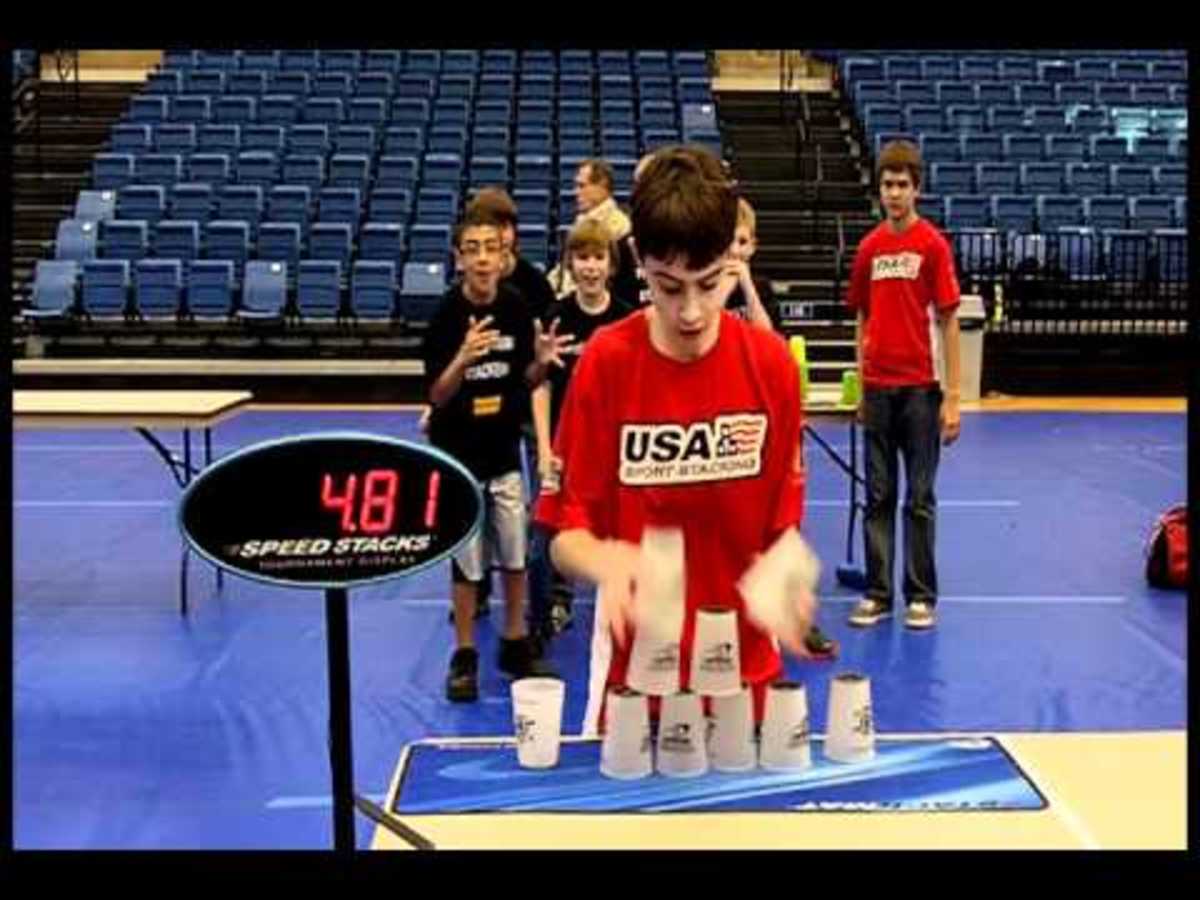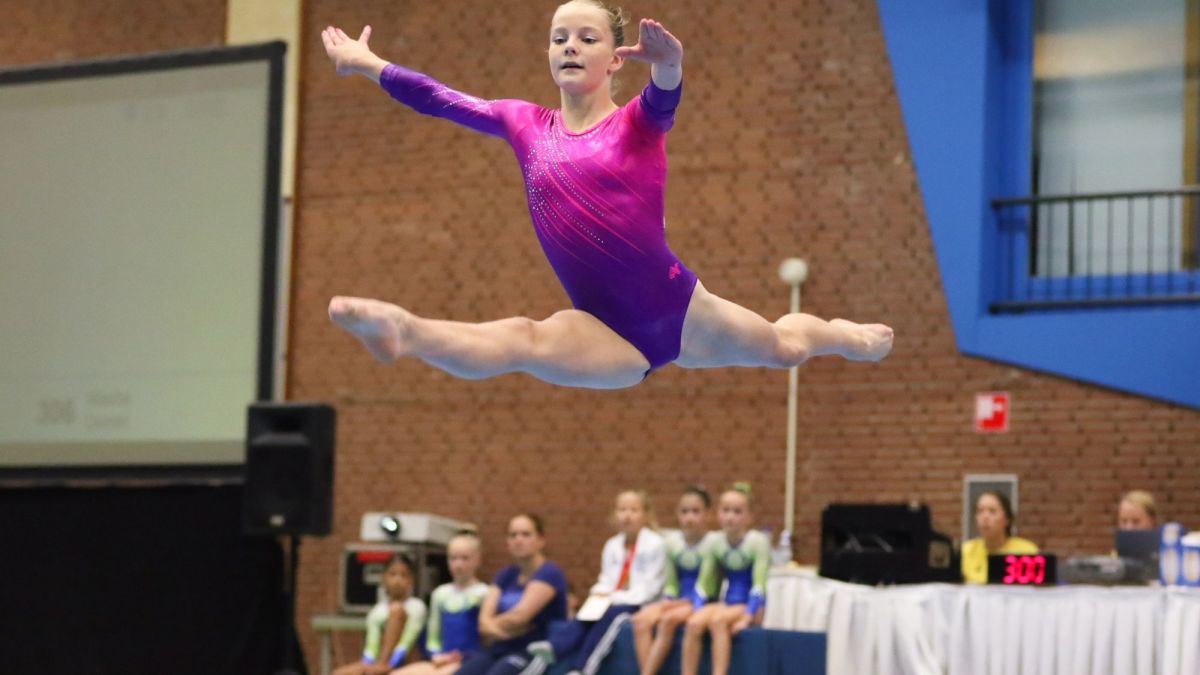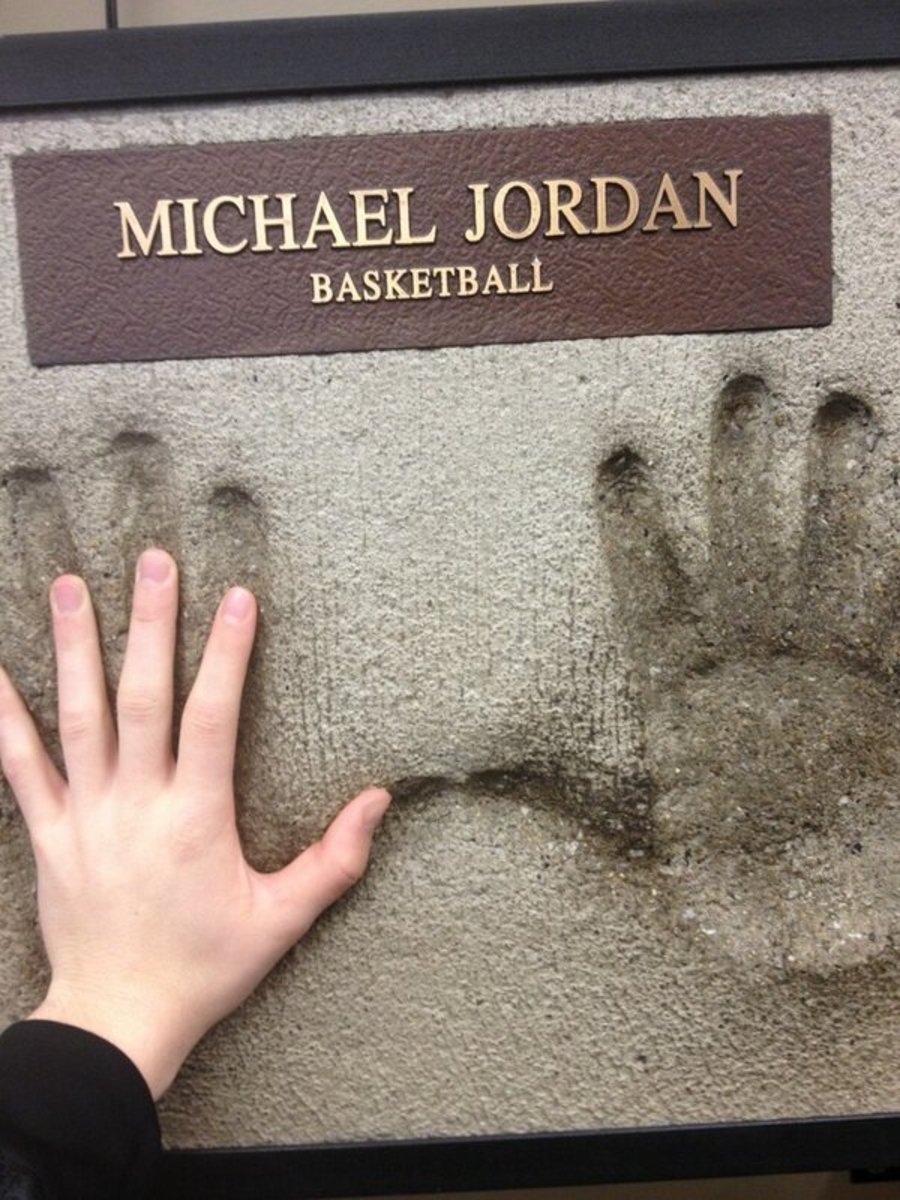The Winter Biathlon: What is this Winter Sport?
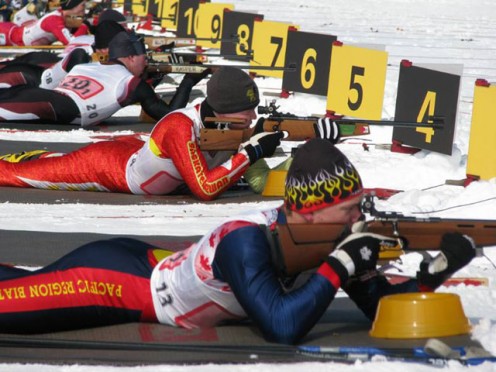
What Happens When You Live in a Cold Climate?
Living in a cold climate requires one to learn to adapt to the coldness through activities that engage the mind and body in the great outdoors. There are many sports that achieve this. These include dog sledding, downhill skiing, snowboarding, snowshoeing, waterfall ice climbing, ice fishing, winter triathlons and numerous more winter activities. The biathlon is another of these great winter sports.
Interested in the history of words? Here are some great books:
Understanding the Meaning of a Biathlon
The word biathlon originates from the Greek words bi, meaning “two”, and athlos, which means “contest”. A biathlon is a contest between warriors, hunters or athletes that tests their abilities in two separate events.
By definition, as an Olympic winter sport, the individual biathlon is a timed competitive sport which combines free-technique cross-country skiing and small-bore rifle marksmanship whereby the time and accuracy in marksmanship determine final placement. During these competitions, the clock is running continuously, whether the athlete is skiing, shooting or loading their rifle and will only stop once the athlete has crossed the finish line.
Though cross-country skiing biathlons are the most known, there are other types of biathlon. These include ski archery, snowshoe biathlon, running biathlon and mountain bike biathlon.
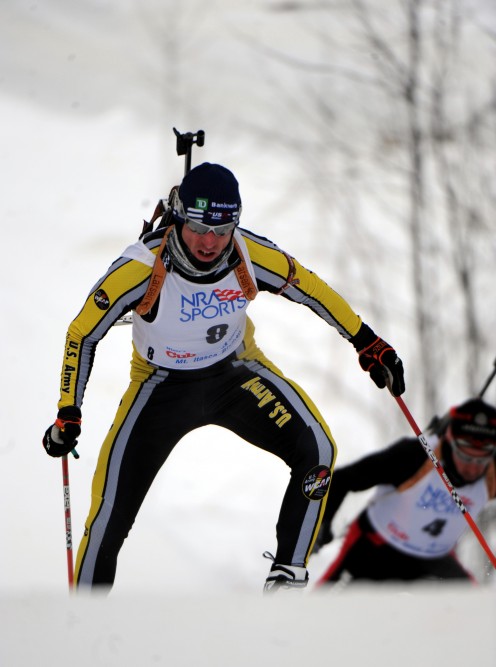
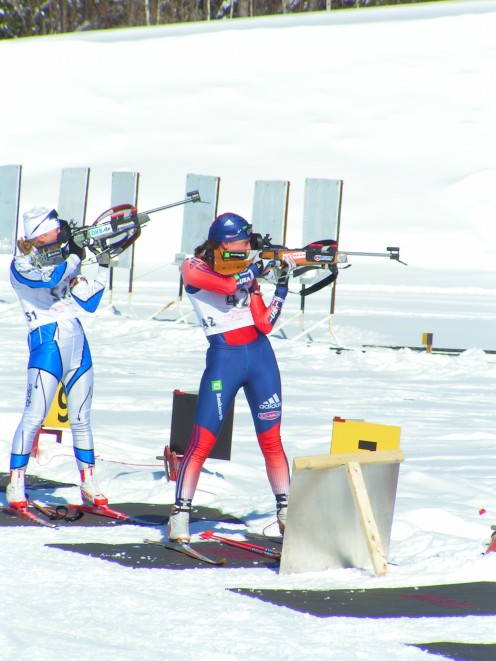
The History of Biathlon
Over four thousand years ago, the biathlon was born as a way of hunting. In Norway, petroglyphs, which are carvings or inscriptions etched into rock, were found depicting hunters pursuing game on skis and hunting with spears. Over time, the petroglyphs became written descriptions of hunting using skis and the first recorded description was dated 400 B.C. There was evidence that Virgil, the Roman poet, wrote about the biathlon. The idea of pursuit on skis and hunting was soon adopted by the military. There is documentation written by generals, writers, geographers and historians about the adapting the biathlon as a form of hunting to a form of military defence. Scandinavia was well known for its “military patrol”. As the biathlon evolved, it became a sporting competition between countries and their athletes.
The Birth of the Biathlon Competition
The first biathlon competition was recorded in 1767 between Sweden and Norway along their border though regular competitions did not begin until the early twentieth century. In 1924, it became an event at the first Olympic Winter Games in Chamonix, France. The biathlon remained as part of the Winter Games until 1948 when post-war sentiments caused it to be dropped.
In 1957, the Union Internationale Pentathlon Modern presented its case to the International Olympic Committee and proposed the biathlon as an “Individual Biathlon” and as an official event at the Olympic Winter Games. The motion was approved and the biathlon was re-introduced to the Winter Olympics as the Individual Biathlon in 1960 with Klas Lestander (SWE) receiving the first Olympic gold medal in this event.
In the late 1970s, the rifle standard was changed to small bore rifles with a .22 in calibre. With its lighter weight, women became more curious about the sport and began to train and compete. As the sport gained interest for women, women’s competitions became more commonplace and popular. Despite this, it was not until the Albertville Olympic Winter Games in 1992 in Albertville that the women could compete in the individual biathlon.
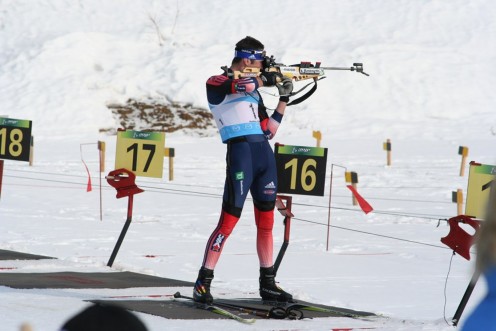
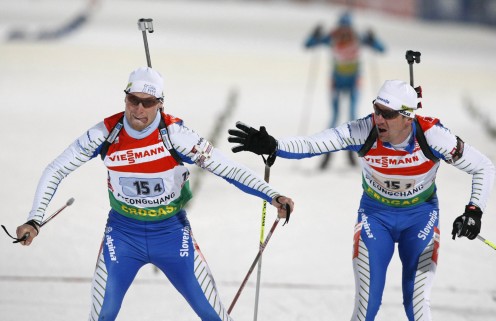
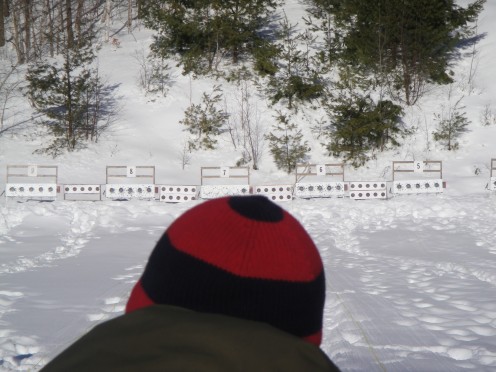
Why is the Biathlon Challenging?
Have you ever cross-country skied before? It is a sport that uses every single muscle in your body as you propel yourself forward on your skis with the aid of using your poles held in your hands. Cross-country skiing covers terrain that has few gentle slopes and plenty of near flat terrain. The exertion of the physical propelling yourself forward raises your heart rate and provides a fantastic cardiovascular workout. It is a sport that requires the athlete to be in top physical health for optimal performance otherwise the body would tire too quickly.
Have you ever shot a rifle or pistol before? Shooting requires a steady hand, focus and a sharp eye. It requires fine motor skills in lining the sight and target as even the slightest waver could cause a missed hit. The biathlete must be able to shoot prone or standing, and in some competitions, it is performed in a predetermined sequence.
The individual biathlon combines two contradictory disciplines into one competition. Imagine cross-country skiing for distances that vary from 7.5 to 20 km in cold winter weather, stopping, sighting a target at 50 m, shooting five rounds in each bout at five targets while throughout all this, you are breathing heavily and your heart is racing all the time knowing that the clock continues to run and will not stop until you cross the finish line. If that is not enough pressure, the target diameters are 115 mm for standing and 45 mm for prone and with each missed target, a penalty of one minute is added on to your final time. It takes skill, concentration, determination and an ability to perform under great pressure to compete in a biathlon.
In an individual biathlon competition, the athlete begins the competition at the start line and skis one trail loop where the length depends on the competition, arrives at the range and shoots, skis another loop, arrives at the range and shoots and so on and skis the last loop to the finish line. The biathlete is responsible for their own actions, such as selecting a target, counting the number of missed plates on their targets and skiing the correct number of penalty loops, if applicable. However, they must always follow the competition rules.
Types of International Biathlon Competitions
There are six international types of competitions. These are Individual, Sprint, Pursuit, Mass Start, Relay and Team. With the exception of Team and Mass Start, these competitions are events in the Olympic Winter Games.
The Individual Competition
This is the traditional biathlon competition. It has the longest skiing distance and has four bouts of shooting where misses can be seen on a shot to shot basis. In this competition, the shooting is the most important aspect as the penalty for misses is the addition of one minute to the final time for each missed target. One can have a fast finishing time, but should the athlete have missed targets, then his final time can quickly increase as time penalties are added on the finishing time. On average, this competition takes one hour to complete.
The Sprint Competition
The sprint competition is a shorter and faster version of the individual competition. In this race, skiing speed is more important than shooting. Instead of a being penalized with time for each missed target, the biathlete is required to ski a 150 m penalty loop for each missed target. This penalty will cause the biathlete to increase his finishing time. With shorter distances and only two bouts of shooting, this competition can be completed in an average of 30 minutes.
The Pursuit Competition
Unlike the individual and sprint competitions where one can participate upon registration, the pursuit competition requires the biathlete to participate and win the qualifying competition, which is normally held the day before. The qualifying competition can be either the individual or sprint. The competition to qualify is fierce as the total number of participants in the World Championships and World Cup Pursuit is restricted to 60. In another words, only 60 competitors are allowed to compete from the international world of biathletes.
In this competition, the winner of the qualifying competition starts first. The remainder follow in the order and time that they finished behind the winner in the qualifying competition. Throughout this competition, the biathletes are “pursuing” the biathlete ahead of them thus allowing the spectator to see who is in the lead at all times. The first competitor to cross the finish line is the winner though the biathlete is subject to any penalties or time adjustments which may cost him to finish at a lower ranking. If a competitor is lapped in the competition, he must withdraw immediately.
The Mass Start Competition
Participation in the mass start competition is based on the top rankings of the current World Cup total score as well as the medallists of the individual, sprint and pursuit competitions for the World Championships.
The mass start competition provides suspense and excitement for spectators as all competitors for this competition begin at the same time. Due to the simultaneous start, each biathlete will require a target at approximately the same time. In this competition, participants are limited to 27, which is the minimum number of targets required for a World Cup event. This also allows each biathlete to shoot at the same time.
The mass start competition is similar to the individual competition but has two major differences. First, the distances for skiing are shorter. Second, for shooting, there is a positioning sequence which follows the positions of prone, prone, standing and standing. If a competitor is lapped during the competition, he must withdraw immediately.
The Relay Competition
Participation in the relay competition is determined by the event rules. Start numbers, seen as the numbers on the bibs, for each team are then drawn in a random draw. The start number represents the team’s start track and shooting lane. For example, if the start number is 10, then the team will begin the competition on Track 10 and proceed to shoot in lane 10 for the first leg. For the remainder of the race, the competitors will shoot in the lane number that corresponds to their arrival. For example, if the biathlete arrives in the fourth position, he will shoot in lane 4.
Each team consists of four members who ski 7.5 km and shoot two bouts. The competition begins with a simultaneous mass start, with the first member skiing 2.5 km, shooting prone, skiing 2.5 km, shooting standing, skiing 2.5 km to tag the next team member. The last team member will ski the last 2.5 km to the finish line. The first one to cross the finish line wins subject to any time or regulation penalties which could alter their ranking.
In the other competitions, each biathlete carries five rounds. In the relay competition, each member of the relay team carries five rounds plus three spare rounds. If all five targets are not knocked down with the first five rounds, then the three spare rounds must be used.
The goal of this competition is to shoot extremely fast, hit all five targets and ski away quickly. However, there is intense pressure in this competition, and sometimes not all five targets are hit. When this happens, the competitor must load each spare round individually by hand. This takes more time and is difficult to do under great pressure. The greater the pressure, the greater the misses, the more time it takes.
To ensure that the competition does not take too long to complete, extremely slow teams are eliminated. After the last member of the fifth team crosses the finish line, all teams which have not reached the shooting range will be stopped at the entrance of the range and be disqualified. Teams that are already on the range at that time will be allowed to complete the competition. Any competitor who is lapped during the competition must withdraw immediately.
The biathlon is a great outdoor multi-discipline winter sport that tests skill, endurance, focus and performance. It is also an exciting sport to watch, especially during the Olympic Winter Games. You can enjoy the competitions as an active participant, a spectator, a volunteer or through video games. In any form, it's exciting and fun!


This content reflects the personal opinions of the author. It is accurate and true to the best of the author’s knowledge and should not be substituted for impartial fact or advice in legal, political, or personal matters.
© 2010 Beth100



